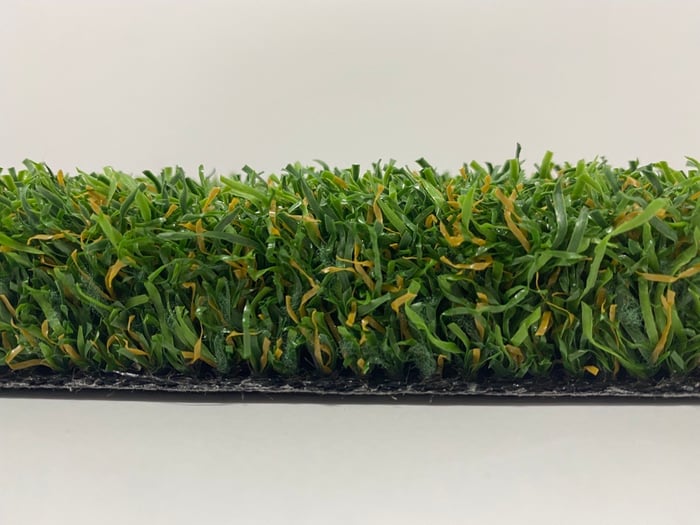With an emphasis on manufacturing systems with no added microplastics, synthetic grass manufacturers have been undertaking R&D and subsequently delivering on this goal for the past couple of years.
What are the differences between 4th Generation (4G) products and other generations products?
Known as 4th Generation (4G) products, these systems no longer consist of rubber performance infill above the sand ballast layer. The manufacturers are using a blend of different shaped and textured yarn to try and replicate the thatch layer present in a natural turf surface.
This manufactured thatch layer will:
- Assist with players grip and traction regardless of weather conditions
- In conjunction with the underlying shockpad, create a system that meets the requirements for critical fall height
- Reduce the level of heat generated from the system due to no rubber infill
- Replicate the ball bounce and roll as per a natural turf system
 Example of a 4G product
Example of a 4G product
Why are these 4th Generation (4G) products emerging now?
As per previous synthetic turf systems, the ultimate aim is to replicate the performance and playability of a natural turf system all-year round. The added consideration with this new generation is the need to meet the ongoing concerns relating to uncontrolled micro-plastic displacement from the system into the surrounding environment.
4G synthetic turf systems will replace the 3G rubber infill systems and will be competing against the latter 3G organic infill systems.

